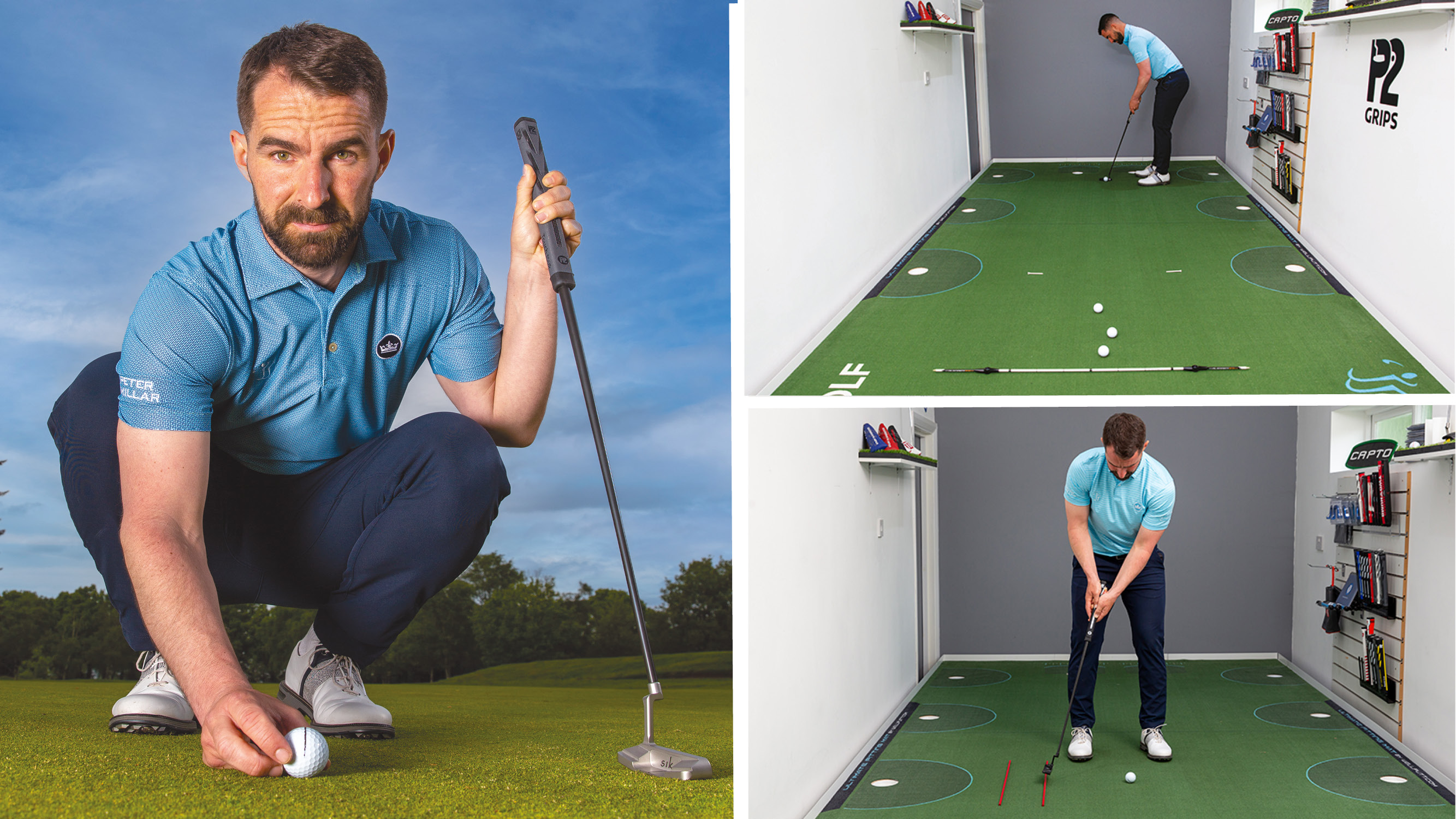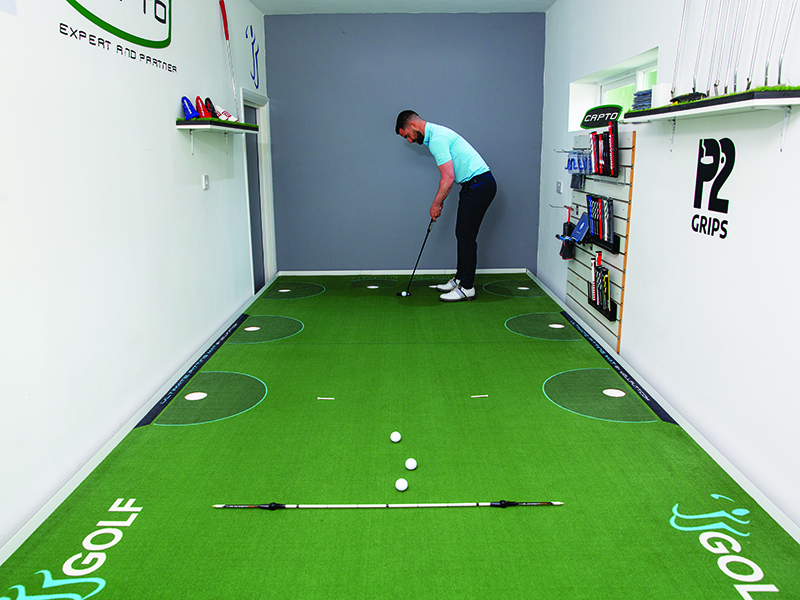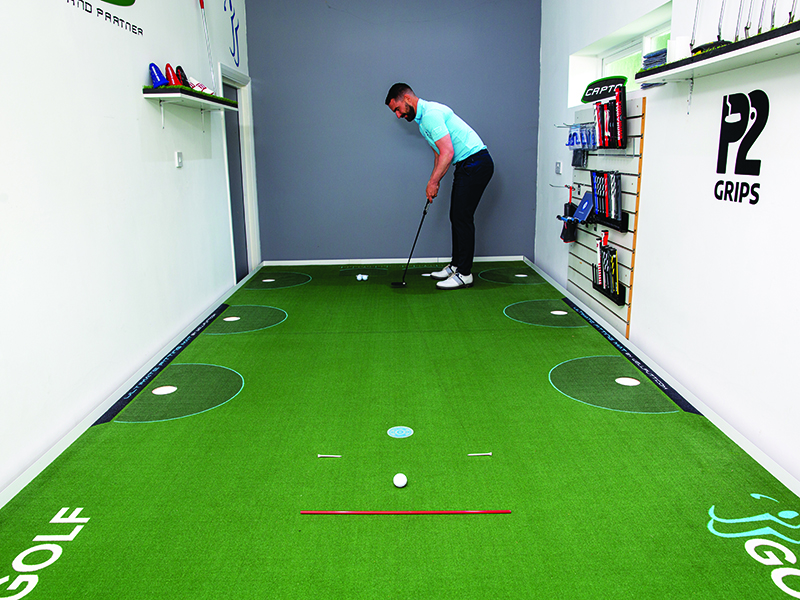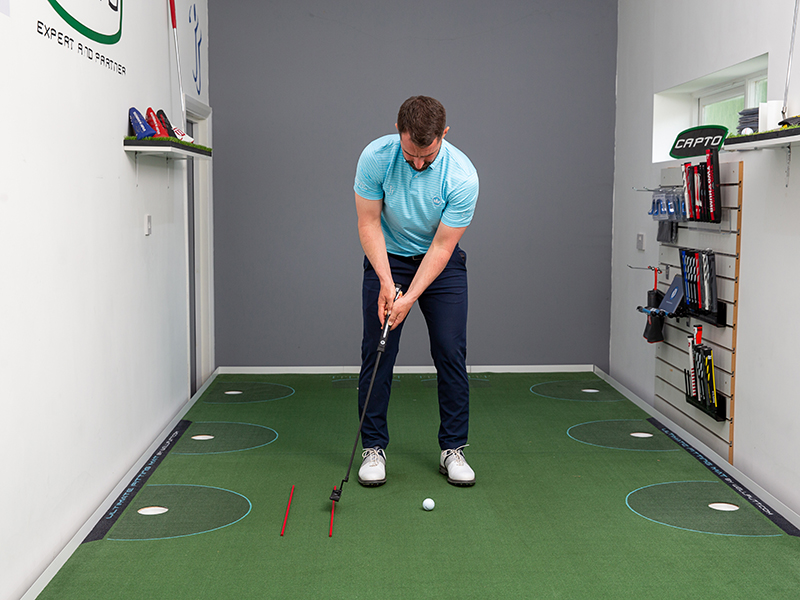
Alignment sticks are a fantastic tool when it comes to golf improvement, but their role in some of the best putting drills can seriously improve your performances on the greens.
Even when it’s cold and wet outside, you can still practise and improve your putting, as there are lots of drills you can do on a putting mat at home to keep your set-up and stroke in check.
In this article, Golf Monthly Top 50 Coach James Jankowski shares his best putting tips and drills using the humble alignment stick...
Putting Drills Using Alignment Sticks
The best putting drills can be carried out at home or at the golf club, allowing you to really put the hours in on this crucial area of the game. For the drills below, all you need is your putter, a few golf balls and an alignment stick.
While they might not focus on how to read greens effectively, you will learn how to control your distance and speed when putting, embedding some good habits for the next time you stride out onto the course.
1. Ladder Drill
This ladder drill is a fantastic way to improve your pace putting. You can refine your speed control even if you only have six to ten feet to work in, so it's great for trying at home or at the golf club.
You can do this on a putting mat or just on the carpet if you have one that runs at a reasonably similar speed to a green. Set up a zone with an alignment stick as the back edge and mark out the front of the box with a couple of tees about three feet short of that.

Hit your first putt to get as close to the far stick as possible and then each one after that should go a little shorter, but stay within the zone. Try and get as many balls in the zone in a row as you can.
You can alter the length of the putt and depth of the box based on how easy or difficult you want to make the drill. Keep a score of how many balls in a row you can hit gradually shorter into the zone and try to beat it next time. This enables you to monitor your progress and creates some pressure and consequence to replicate the feeling of putting on the course.
2. Speed Drill
People often neglect to think about speed on shorter putts, but entry speed to the hole is really important. Even on a four-foot putt, you want to visualise the speed you want the ball going into the hole, as well as the line.
Ideally, you need enough momentum that your ball will hold its line and definitely get past the hole if it doesn’t go in, but not so much speed that it could lip out. If your ball hits the back edge of the hole, it’s got a little too much speed.

You can practise this by putting to a hole on a practice green or a mark on your putting mat. Create a zone behind it using alignment sticks and tees (or tape), similar to the one in the drill above, with the zone starting six inches after the hole and measuring around a foot in depth. If it doesn't go in, the ball should stop in the zone behind the hole.
3. Stroke Length And Tempo Drill
Mark out two or three backswing lengths on the ground using alignment sticks (as in the image below) and hit putts, making sure you’re sticking to the same tempo no matter how long your backswing is.
The focus here is grooving the correct tempo in your stroke for different lengths of longer backswings – not where the ball goes. You can try this at home on a putting mat by putting a cushion down at the end to prevent the ball rolling off the end.

Your stroke should take the same, or a very similar amount, of time no matter how long it is. The longer the backstroke is, the faster it needs to be. It should take the same amount of time to go from address to the end of the backswing, and then from there to the finish – that amount of time should be between 0.55 and 0.7 seconds.
Set a metronome between the high 80s (at the slower end) and 105 (at the higher end) beats per minute to equate to the ideal stroke timings. Start your backswing at the first beep, finish the backswing on the second beep and reach your finish position on the third beep. I’d say 92 beats per minute is a good place to start – don’t worry if it feels a little quicker than your usual tempo, as most amateurs tend to putt with a tempo that’s a bit too slow.







